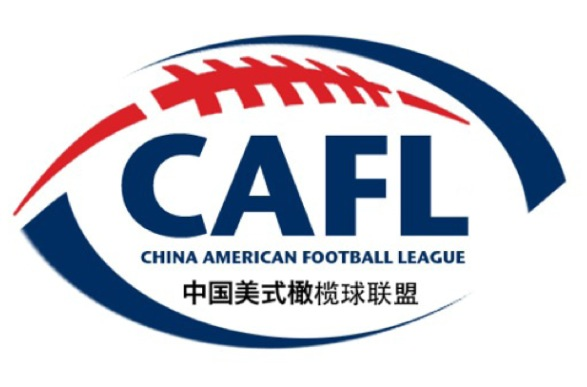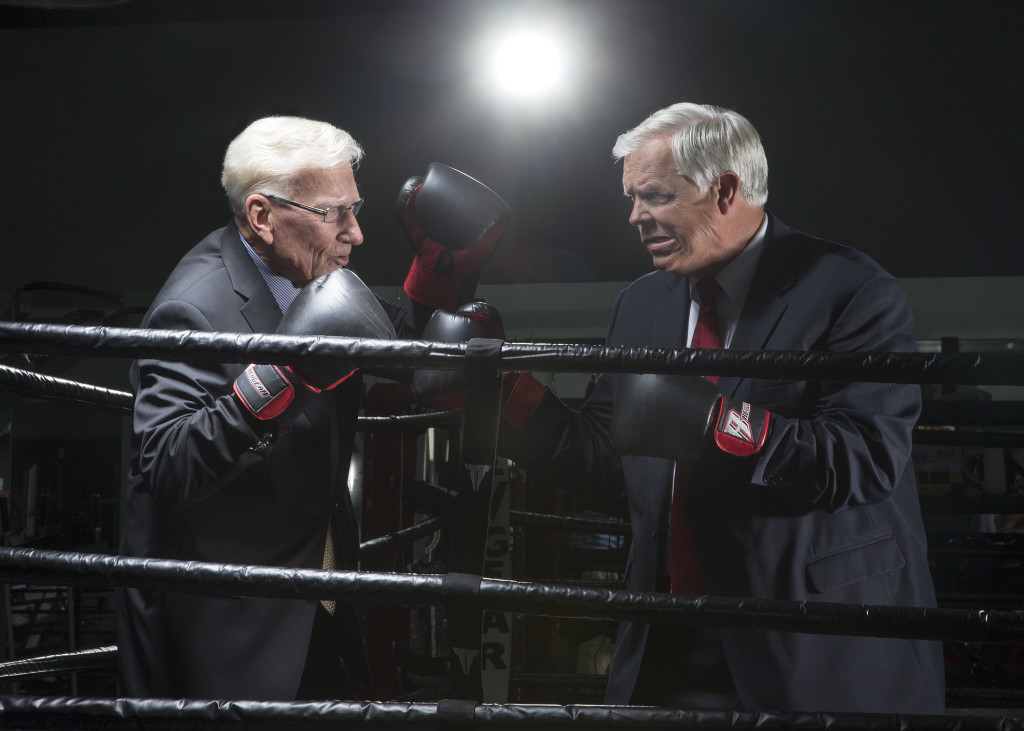Industry News Weekly Roundup
There was a lot of news this past week. Here are some stories that caught our eyes.
China American Football League: 2015 Start Date, Roster Info, Comments and More
—Bleacher Report
“It will be an indoor league featuring AFL [Arena Football League] rules, and there are expected to be six to eight teams.”
Georgia World Congress Center Space Used to Educate, Entertain Local Community
—Trade Show News Network
“Through unique partnerships in the community, the venue not only has two education centers tucked into converted meeting room space, but also the College Football Hall of Fame will be opening in August on the venue’s campus.”
Manchester United Bans iPads, tablets From Stadium
—CTV News
“Citing ‘latest security intelligence,’ United has added ‘large electronic devices including laptops and tablets’ to the list of banned items for match days at its famous 76,100-seater stadium.”
The Beatles at Candlestick in 1966: An Oral History From the Fans
—San Francisco Chronicle
“The concert, the last commercial show for the Beatles, is arguably the most famous musical event in Bay Area history.”
The Premier League is Developing Tech to Detect GIF and Vine Videos of Match Highlights
—The Next Web
“I know it sounds as if we’re killjoys but we have to protect our intellectual property.”
Eating Fruits and Vegetables Helps Give Your Life Meaning
I’m sure you’ve heard more than once that you should eat your vegetables. Yeah, yeah, we all know they’re full of vitamins and what not that do a body good. But I’ve tried cauliflower, and cauliflower and I have agreed to never cross paths again.
Still, there are tons of other great vegetables (high-five green beans, asparagus, Brussels sprouts!) worth eating because they’re not just good for your physical body—they’re also good for your mind. For you see, researchers have concluded that eating fruit and vegetables is associated with a greater flourishing in daily life.
“Our aim was to determine whether eating fruit and vegetables (FV) is associated with other markers of well-being beyond happiness and life satisfaction,” the researchers wrote in the study‘s abstract. “Towards this aim, we tested whether FV consumption is associated with greater eudaemonic well-being—a state of flourishing characterized by feelings of engagement, meaning, and purpose in life. We also tested associations with two eudaemonic behaviours—curiosity and creativity.”
The researchers had 405 young adults complete an Internet diary for 13 consecutive days, reporting on their consumption of fruit and vegetables and their eudaemonic well-being, curiosity, and creativity.
“Young adults who ate more FV reported higher average eudaemonic well-being, more intense feelings of curiosity, and greater creativity compared with young adults who ate less FV,” the researchers wrote. “On days when young adults ate more FV, they reported greater eudaemonic well-being, curiosity, and creativity compared with days when they ate less FV.”
Sure, the findings are correlational, the researchers said, but “this study provides the first evidence that FV consumption may be related to a broader range of well-being states that signal human flourishing in early adulthood.”
So, while spinach may not make you physically strong, it will at least help you be more creative, which is a strength in itself.
(photo credit: Jon McGovern via photopin cc)
10 Tips to Help Managers Handle Workplace Stress
The best way to reduce workplace stress as a manager is to have a good working relationship with employees. That just one of the findings from a recent study by Professors Astrid M. Richardsen and Stig Berge Matthiesen at the BI Norwegian Business School in which four key stress factors were investigated: Time pressures and workload, emotional strain, role stress at work (role conflict between demands from top management and from employees), and role conflict between work and private life.
“Although a clear majority of the managers experience time pressure at work, there are relatively few who have role stress at work, or a role conflict between work and private life,” the researchers said.
To help managers handle workplace stress, Richardsen and Matthiesen suggest 10 strategies.
1. Find out what is creating the stress: Identify the sources of work stress. Knowledge makes it easier to implement stress management measures.
2. More knowledge about stress: Increase the general knowledge of the nature of stress. How do various conditions for stress interact? What can be done about it?
3. Have a healthy lifestyle: Make sure you have sufficient rest and sleep, exercise, and a healthy diet. A healthy mind in a healthy body. There are good reasons why so many managers are keen on their exercise.
4. Learn to rest and relax: Practice the skill of stressing down or relaxing. Muscle relaxation, meditation, and tools that tell you whether your body really is relaxing may help.
5. Manage your time more efficiently: Learn to prioritize work tasks better. Identify the time thieves, and try to get rid of them.
6. Increase your employees’ skills: By increasing the skills of your employees, you yourself will have less stress. You will feel more confident that the jobs you delegate will be done.
7. Establish relationships for support: Do you have someone to ask for help and support when you need it? Is there anyone you can go to with your joys and sorrows? Social support in everyday life is important for managers, too.
8. Plan your career: For managers as for others, a job or work commitment may have a “best before” date. Remaining too long in a job may lead to unnecessary stress or strain.
9. Switch jobs in time: Make the switch while you still have good control of the job and its related stress.
10. Seek outside, professional help if the job becomes too much of a strain: Major work stress can have serious consequences, both for the person suffering it and for his/her surroundings.
(photo credit: bottled_void via photopin cc)
Arenas: Sports Bidding and the Hosting Process
The Arena Management Conference (AMC) takes place this year in Long Beach, California, September 14-16. There are several great educational sessions, including one titled “Sports Bidding/Hosting Process.” It’s a panel discussion moderated by Bredan Buckley, vice president at Columbus Area Sports & Entertainment. The panelists will be Will Hunter, vice president of operations for the PAC-12; Jeff Jarnecke, director of championships and alliances for the NCAA; Ken Kuhl, vice president of event development at the American Airlines Center; Ben Tario, assistant commissioner of football, multimedia, and legal affairs for the ACC; and Sean Saadeh, senior vice president of programming at the Barclays Center.
We spoke with Kuhl to learn more about the bidding process and the session.
How many NCAA championships does the American Airlines Center host annually?
We would hope to host a men’s or women’s event each year but with the way the bid cycles are setup and the other facilities in the region that host various men’s and women’s events as well, a venue is not likely to host an event annually. Through the bidding process, we expect to host a NCAA event every two-to-three years. In addition, we are also bidding on the Big 12 Conference Men and Women’s Championships, so we have to consider that process when we submit bids for NCAA event.
What is the No. 1 priority for the NCAA, in your experience, when it considers where to play its championships and how does AAC meet that need?
First and foremost, I believe the NCAA is looking for a city/area that has the ability to sell tickets to their championship event. Secondly, is there a host organization that has the ability to put on a first-class event and a city that can accommodate the fans? With those two items in place, you will have a successful event.
How has the bidding process changed over the last five years, and how do you see it evolving?
The use of the NCAA portal has greatly changed the way the bidding process works. It certainly cuts down on the size of the bid document that you have to submit to the NCAA for a specific event. I see the process changing dramatically with the proposed changes that are being discussed currently with the big five conferences and the NCAA.
What’s the No. 1 thing you’d like for attendees to take away from the session?
You have to have a great working relationship/partnership with your sports commission or CVB. With either of these entities looking for events to bring to the city, you have a great opportunity to increase your event bookings and garner some great national publicity for your venue.
Violent Rhetoric Can Boost Unethical Behavior in Employees
Your fighting words are doing more than boosting employees—they’re causing them to be unethical, too.
A Brigham Young University (BYU) business study found that bosses who motivate with violent words or phrases end up influencing their employees to play dirty.
“Business executives use violent language all the time,” said David Wood, BYU professor of accounting and one of two BYU authors on the paper. “They say, ‘We’re going to kill the competition,’ or ‘We’re going to war.’ This study shows they should think twice about what they’re saying.”
In a twist, though, the study also found that when an employee’s own manager used violent rhetoric, the employee was less likely to make unethical choices.
Wood and his colleague conducted two experiments with 269 participants. For the first experiment, half the participants were showed this message:
To this end, I am declaring war on the competition in an effort to increase our market share. I want you to fight for every customer and do whatever it takes to win this battle. To motivate you to fight for this cause, I will be rewarding the top ten sales associates, and a guest, an all-expense paid vacation to Hawaii.
The other half of the participants were shown the same message but with “war,” “fight,” and “battle” replaced by “all-out-effort,” “compete,” and “competition.”
The researchers then asked the participants how likely they were to engage in unethical behavior—specifically, posting fake, negative reviews online about a competitor’s product. They discovered that when the violent rhetoric was from a competing CEO, employees were more likely to post the fake, negative reviews.
“What’s disconcerting is that people don’t think they’re being unethical in these situations,” Wood said. “You can’t just say, ‘OK people, you need to be better now, don’t be bad,’ because they don’t think they’re being bad.”
A second experiment involving email and bending internal sales policies came to the same conclusion as the first experiment.
“There has been a lot of research on the effects of violence and violent media on aggressive behavior,” said Josh Gubler, a BYU political science professor. “This research shows it goes further: It affects your willingness to lie and to cheat and to bend moral rules. There are serious implications for CEOs.”
(Image: BYU/Mark A. Philbrick)
Do you want to receive a Front Row News weekly digest?
Categories
- Allied (861)
- Architecture (147)
- Arenas (747)
- Career (897)
- Convention Centers (895)
- Education (623)
- Events (1,544)
- Food & Beverage (193)
- Foundation (113)
- Guest Experience (1,496)
- Industry News (2,270)
- Leadership (1,888)
- Marketing (150)
- Membership (2,000)
- Music (213)
- Performing Arts Centers (454)
- Professional Development (409)
- Research (127)
- Safety & Security (442)
- Sports (763)
- Stadiums (608)
- Student (159)
- Technology (516)
- Ticketing (92)
- Touring (82)
- Trends (364)
- Uncategorized (739)
- Universities (218)
- Video (25)
- Young Professional (198)
Twitter Feed
- Twitter feed loading
Recent Posts
- New Member Benefit! IAVM Partners with Advantage Training to Elevate Staff Readiness and Guest Experience
- Charlotte Convention Center Welcomes Two New Leaders to its Management Team
- Fort Worth Cuts Ribbon on Phase 1 of Convention Center Expansion
- Raleigh Convention Center Update Following December 1st Fire
- VenuWorks Appoints Robert Thomas as Executive Director for Cedar Rapids Facilities
Categories
- Allied
- Architecture
- Arenas
- Career
- Convention Centers
- Education
- Events
- Food & Beverage
- Foundation
- Guest Experience
- Industry News
- Leadership
- Marketing
- Membership
- Music
- Performing Arts Centers
- Professional Development
- Research
- Safety & Security
- Sports
- Stadiums
- Student
- Technology
- Ticketing
- Touring
- Trends
- Uncategorized
- Universities
- Video
- Young Professional
Archives
- December 2025
- November 2025
- October 2025
- September 2025
- August 2025
- July 2025
- June 2025
- May 2025
- April 2025
- March 2025
- February 2025
- January 2025
- December 2024
- November 2024
- October 2024
- September 2024
- August 2024
- July 2024
- June 2024
- May 2024
- April 2024
- March 2024
- February 2024
- January 2024
- December 2023
- November 2023
- October 2023
- September 2023
- August 2023
- July 2023
- June 2023
- May 2023
- April 2023
- March 2023
- February 2023
- January 2023
- December 2022
- November 2022
- October 2022
- September 2022
- August 2022
- July 2022
- June 2022
- May 2022
- April 2022
- March 2022
- February 2022
- January 2022
- December 2021
- November 2021
- October 2021
- September 2021
- August 2021
- July 2021
- June 2021
- May 2021
- April 2021
- March 2021
- February 2021
- January 2021
- December 2020
- November 2020
- October 2020
- September 2020
- August 2020
- July 2020
- June 2020
- May 2020
- April 2020
- March 2020
- February 2020
- January 2020
- December 2019
- November 2019
- October 2019
- September 2019
- August 2019
- July 2019
- June 2019
- May 2019
- April 2019
- March 2019
- February 2019
- January 2019
- December 2018
- November 2018
- October 2018
- September 2018
- August 2018
- July 2018
- June 2018
- May 2018
- April 2018
- March 2018
- February 2018
- January 2018
- December 2017
- November 2017
- October 2017
- September 2017
- August 2017
- July 2017
- June 2017
- May 2017
- April 2017
- March 2017
- February 2017
- January 2017
- December 2016
- November 2016
- October 2016
- September 2016
- August 2016
- July 2016
- June 2016
- May 2016
- April 2016
- March 2016
- February 2016
- January 2016
- December 2015
- November 2015
- October 2015
- September 2015
- August 2015
- July 2015
- June 2015
- May 2015
- April 2015
- March 2015
- February 2015
- January 2015
- December 2014
- November 2014
- October 2014
- September 2014
- August 2014
- July 2014
- June 2014
- May 2014
- April 2014
- March 2014
- February 2014
- January 2014
- December 2013
- November 2013
- October 2013
- September 2013
- August 2013
- July 2013
- June 2013
- May 2013
- April 2013
- March 2013
- February 2013
- January 2013
- May 2012
- March 2012
- December 2011
- November 2011
- October 2011
Recent Comments
- Frank Bradshaw, Ph.D., CVE on John Meyer, CVE, a Tireless Advocate of Certification for Venue Professionals, Has Died
- Neil Sulkes on Hilary Hartung, Friend to Many in Venue Marketing, Has Left Us
- Jason Parker, CVE on The Devastation of Hurricane Helene and How We Can Support One Another
- Larry Perkins on Touhey Testifies Against Speculative Ticketing Before Congressional Subcommittee
- Peter Secord on Major Players for Planned Elkhart Amphitheater Were in the Mix at VenueConnect





